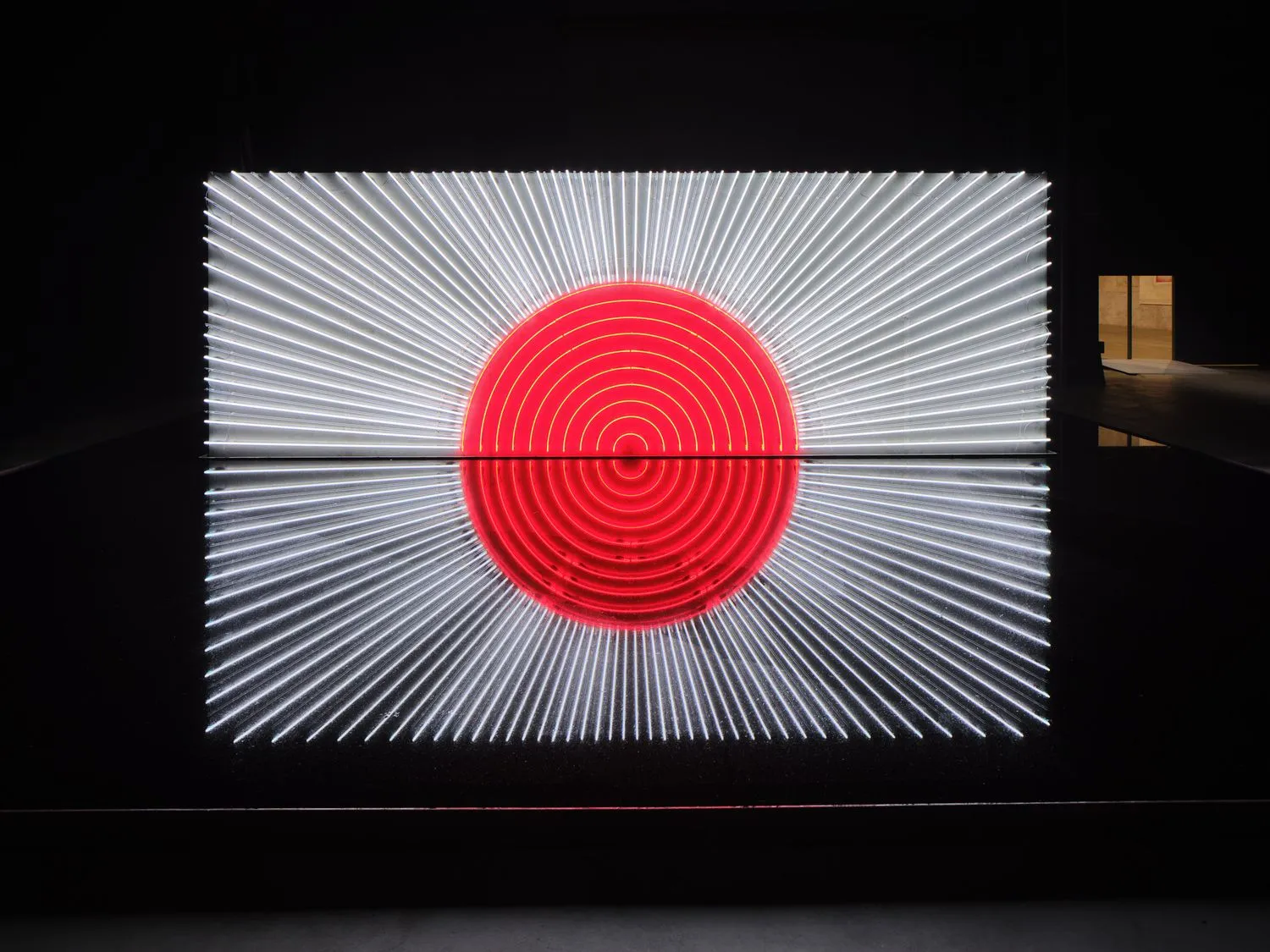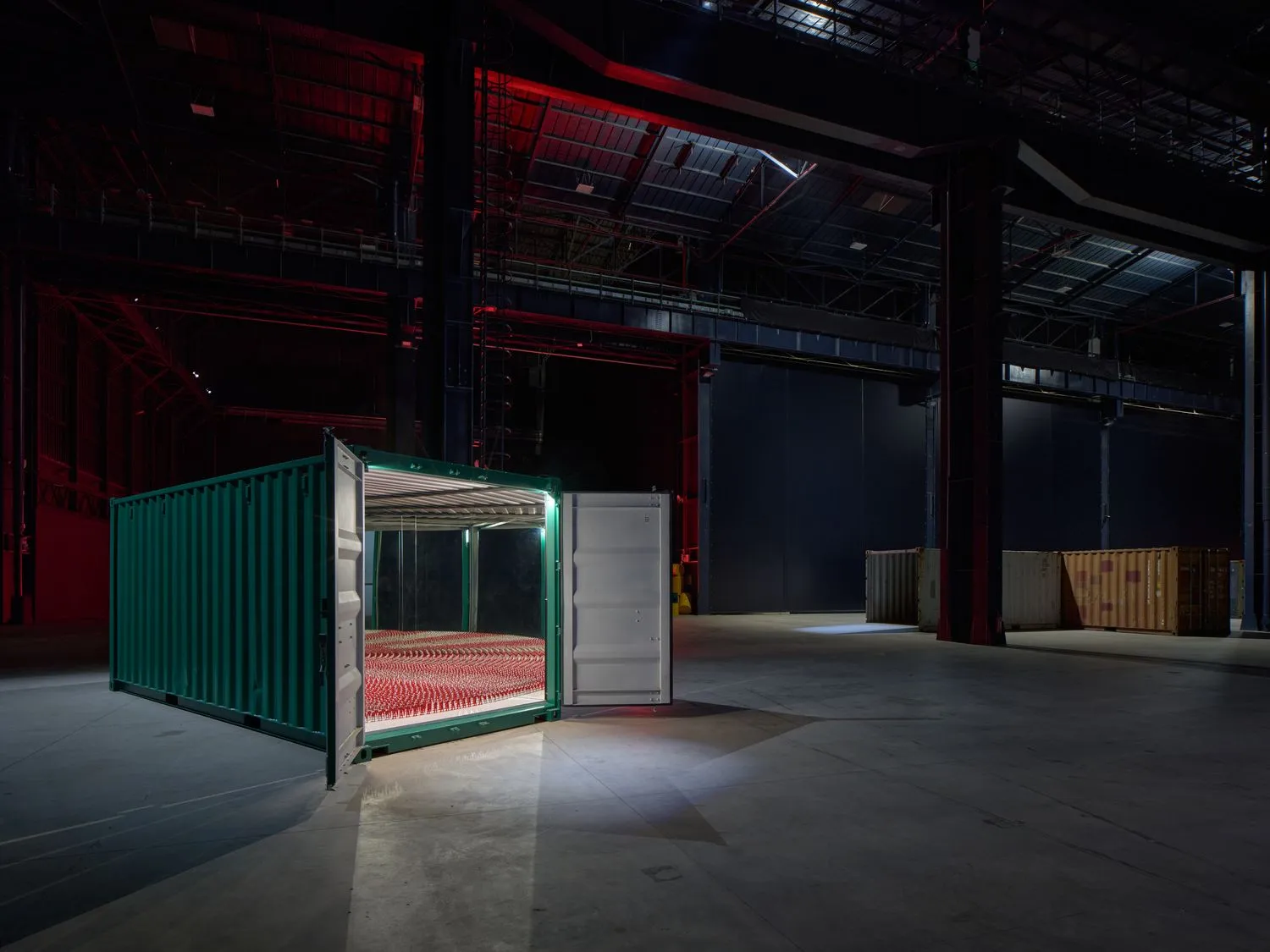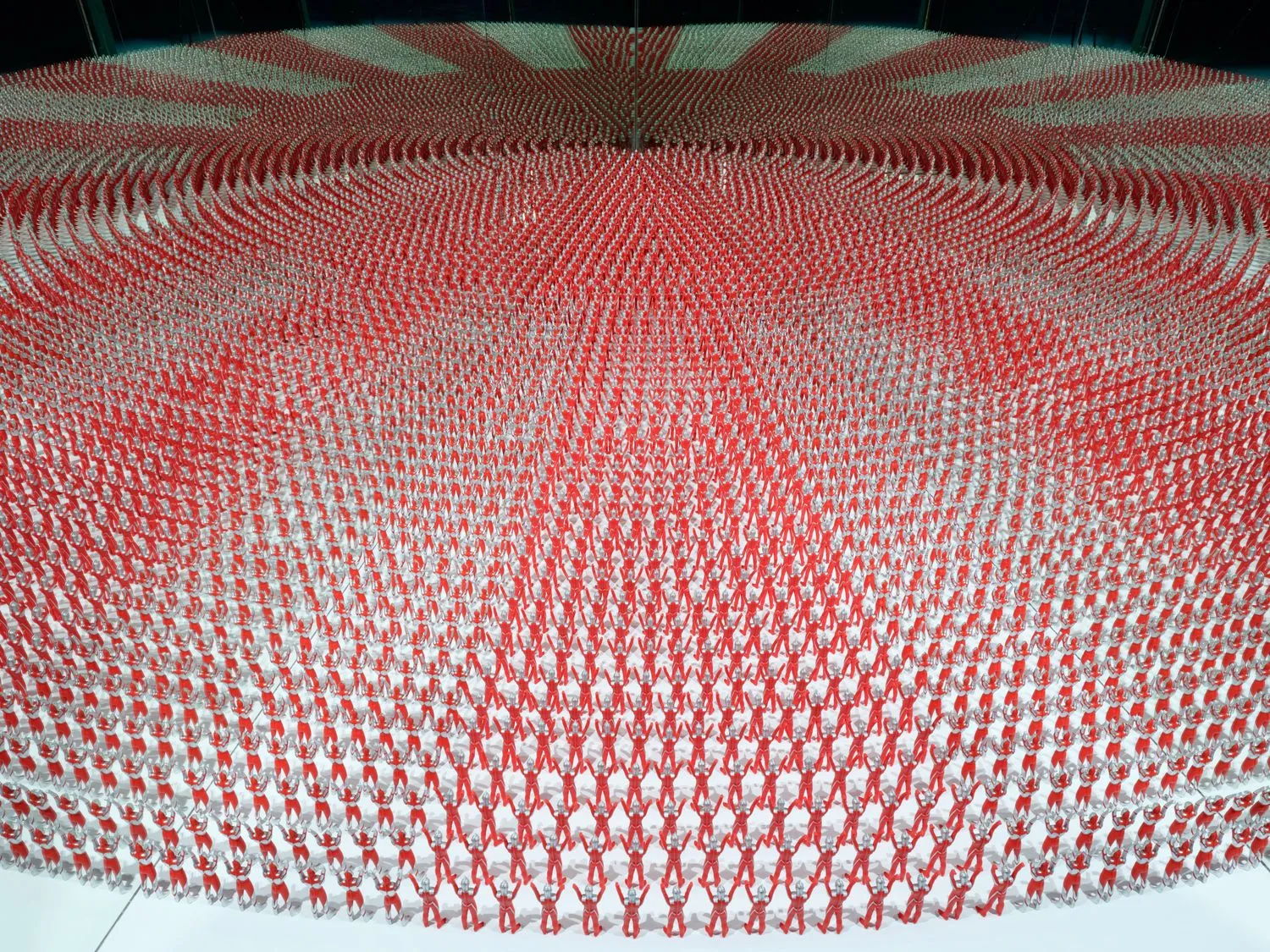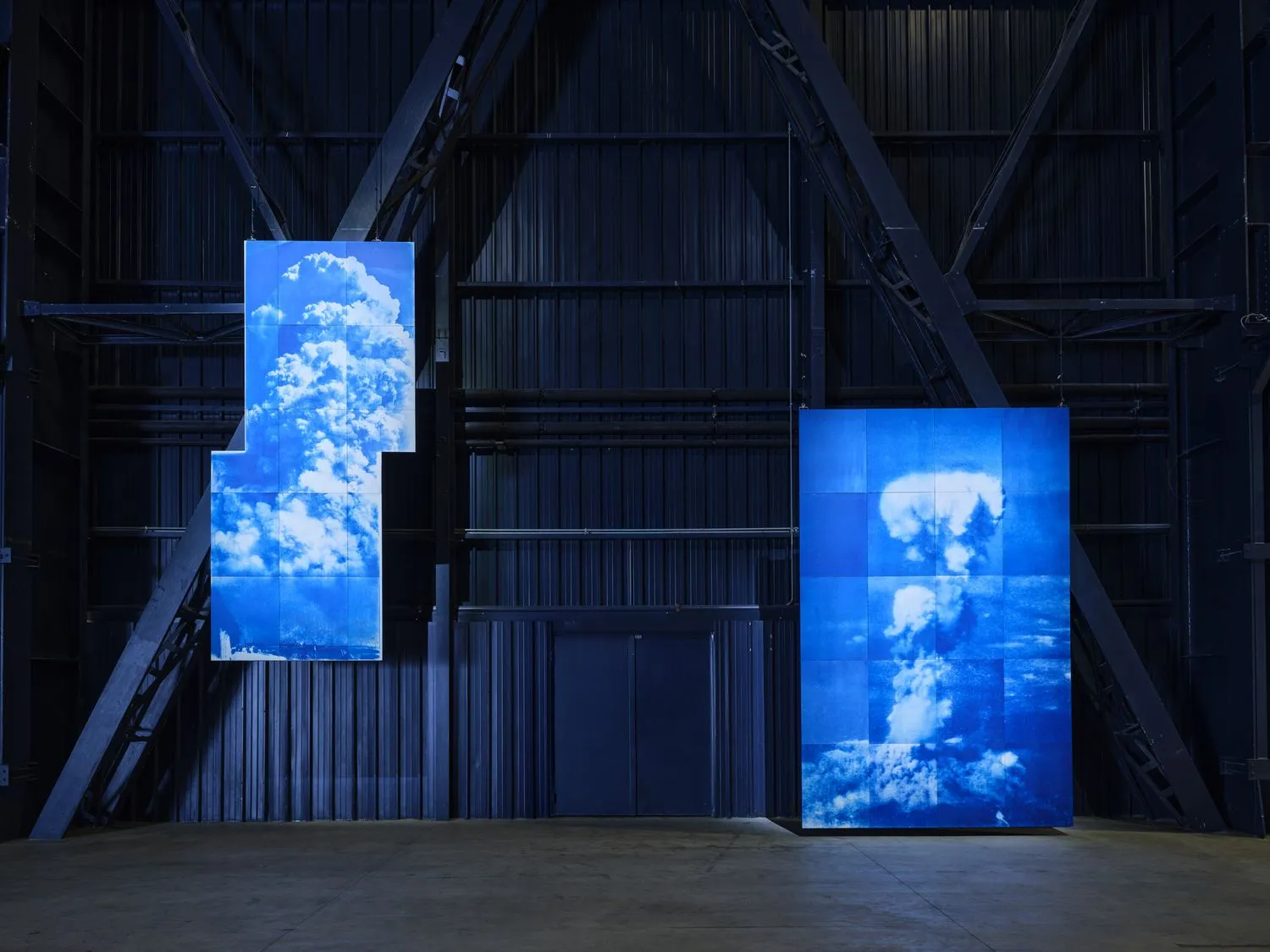 Yukinori Yanagi, The World Flag Ant Farm 2025, 2025 (detail). Installation view, Pirelli HangarBicocca, Milan, 2025 ©YANAGI STUDIO Courtesy the artist and Pirelli HangarBicocca, Milan. Photo Agostino Osio
Yukinori Yanagi, The World Flag Ant Farm 2025, 2025 (detail). Installation view, Pirelli HangarBicocca, Milan, 2025 ©YANAGI STUDIO Courtesy the artist and Pirelli HangarBicocca, Milan. Photo Agostino Osio For more than three decades, Yukinori Yanagi has explored how power operates—across borders, through symbols, and beneath national myths. Working with living organisms, industrial debris, and poetic fragments, he creates large-scale installations that expose the fragility of national symbols, the fallout of globalization, and the illusions of technological progress, revealing unseen forces that bind, isolate, or destroy. His works function like living diagrams—fragile, unpredictable, and persistently political. Yanagi probes how identities are built and undone, how empires decay beneath modernity’s surface, and how progress can become a force of ruin.
Now, more than thirty years after his breakthrough at the 1993 Venice Biennale, Yanagi returns to Italy with ICARUS, a major retrospective at Milan's Pirelli HangarBicocca. The exhibition brings together emblematic works from the 1990s and 2000s alongside new commissions, offering timely insights into nationalism, state power, and the contradictions of contemporary society. This is not only a retrospective but a critical lens on the present—one attuned to both ruins and repair.
These tensions are embodied in key works such as Project God-zilla 2025 – The Revenant from "El Mare Pacificum" (2025), confronting the trauma of nuclear devastation and unchecked technological power, with Godzilla as a symbol of imperial and environmental catastrophe. In dialogue with this, Article 9 (1994) explores the paradox of Japan's pacifist constitutional ideal amid ongoing militarization, highlighting fragile hopes for peace under constant threat. At the heart of the show, Icarus Container 2025 (2025) reflects on human ambition and its limits, drawing on myth and industrial history to question progress’s costs and modern systems' fragility.
Another iconic work, The World Flag Ant Farm 2025 (2025)—first shown at the 1993 Venice Biennale—challenges fixed notions of sovereignty by depicting ants slowly eroding sand-made flags, symbolizing the fragile and shifting nature of borders and global identity amid conflict and displacement. Through these and other pieces, Yanagi asks what becomes of us when systems fail—when symbols collapse, ambition turns catastrophic, and history resurfaces as ruin.
Raised in postwar Japan and shaped by imperial legacies and U.S. hegemony, Yanagi occupies a self-described "wandering position," living and working from the remote island of Momoshima. There, far from cultural centers, he reimagines art as both critique and possibility—deeply political, yet never reductive. Tracing nationalism, memory, and entropy, Yanagi's art invites reflection on what holds us together—and what might yet set us free.
In this conversation, Yukinori Yanagi reflects on his long practice, the myth of Icarus as a warning against unchecked ambition, the growing challenges of globalism, Japan's imperial legacies, wandering as method, and the urgent need to imagine beyond the boundaries drawn for us.
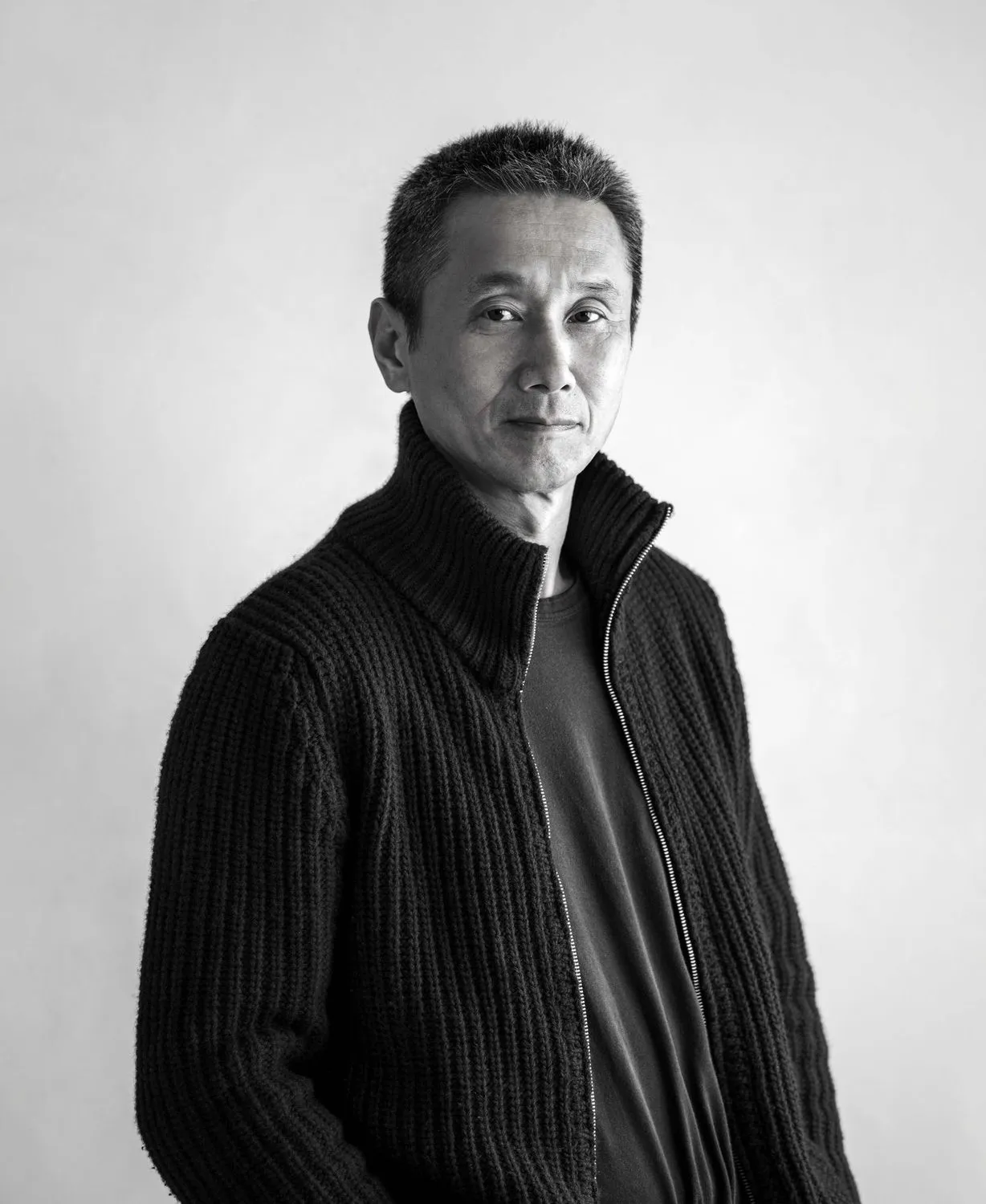
Jelena Martinović: Over thirty years after your breakthrough at the Venice Biennale, what does it mean for you to return to Italy with this retrospective? What has changed — in the world, and in your own practice?
Yukinori Yanagi: The year 1993, when I received the Aperto award at the Venice Biennale, was the height of globalism, and at the same time, the distortions of globalism was beginning to appear.
Being back in Italy after 32 years, it is meaningful to be able to present my work at a time when these distortions have become even more pronounced, especially with conflicts and issues of immigration emerging in many places in the world.
JM: The title of the exhibition references the myth of Icarus, a story of ambition and downfall. What drew you to this narrative, and how does it relate to the themes in your recent work?
YY: The Greek myth of Icarus, who crafted wings and flew out of the labyrinthine tower only to fall when he flew too close to the sun, can be interpreted as a cautionary tale about humanity's overreliance on technology. The centerpiece of the exhibition, Icarus Container, is a reworking of a concept originally conceived in 1995 from my encounter with the ruins of a Meiji-era copper refinery on Inujima, a remote island in Japan's Seto Inland Sea. It was later realized in 2008 as the "Inujima Seirensho Art Museum." The remnants of Japan's modernization appeared to me like the very tower from which Icarus took flight. War, as a consequence of modernization, is not disconnected from new technologies.
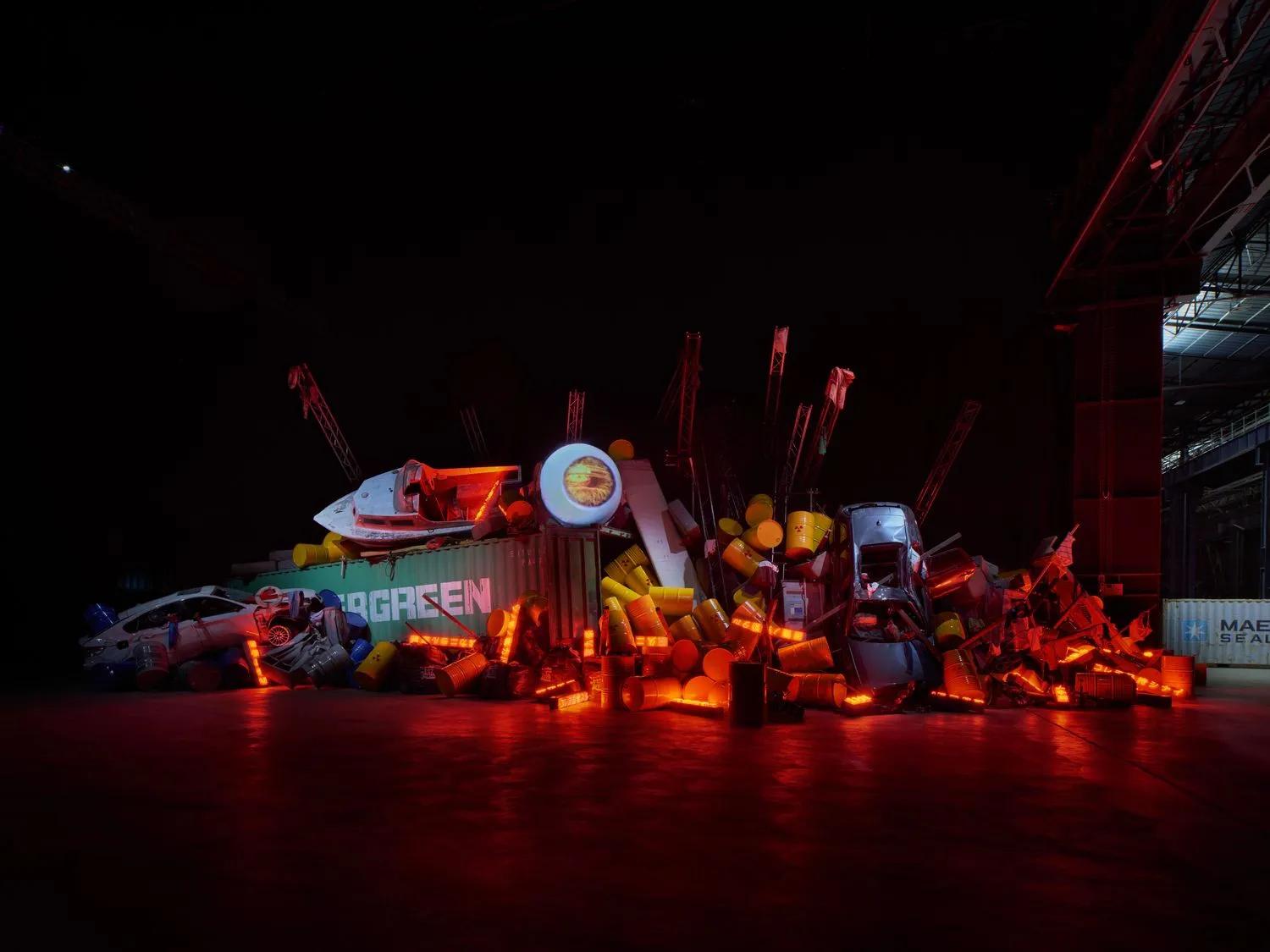
JM: The exhibition opens with Project Godzilla 2025 – The Revenant from El Mare Pacificum. What does Godzilla symbolize for you today, particularly in this time of overlapping ecological, political, and nuclear threats?
YY: When I conceived this work, the towering piles of debris and the nuclear power plant meltdown caused by the tsunami during the 2011 Great East Japan Earthquake evoked the catastrophic imagery of Godzilla. The original Godzilla, enlarged by hydrogen bomb tests in the Pacific, marches toward Tokyo as a force of destruction. Similarly, the collapse of the nuclear power plant- built to generate the enormous amount of electricity consumed by Tokyo - called to mind not only the difficulty of controlling nuclear fission, but also the fall of Icarus, brought down by humanity's overconfidence in technology.
In the installation, repeated images of mushroom clouds from atomic and hydrogen bombs, reflected in Godzilla's eyes, are accompanied by explosive sounds. Alongside mountains of debris stands the neon work Article 9, which displays fragmented phrases from Article 9 of the Japanese Constitution renouncing war as a means of resolving international disputes. This entire assemblage serves as a message from the revenant of the Pacific, returning to question how we live in the present. The spirit of Article 9, born from the tragedy of humanity's first use of the atomic bomb, is constantly under threat due to shifting global political dynamics. Ironically, the force that fights off Godzilla - this revenant from history attacking Tokyo - is the Self-Defense Forces, a military in all but name. And the weapon that ultimately defeats Godzilla is, like the hydrogen bomb, a form of forbidden science. This suggests that unless humanity makes continual efforts to reflect and resist, history will inevitably repeat itself. By combining these two works, I hoped to reinforce and deepen that message.
JM: You've worked directly with the text of Article 9. How do you view its evolving interpretations today, particularly against the backdrop of Japan's recent political shifts and debates around constitutional revision?
YY: Article 9 of the Japanese Constitution is a groundbreaking clause that renounces the nation's right to war. However, it has been a constant subject of debate within Japan. Some argue that it undermines the very foundation of the state, while others see it as a guiding ideal for humanity. Without continuous effort toward that ideal, eliminating war from the face of the Earth will likely remain out of reach.
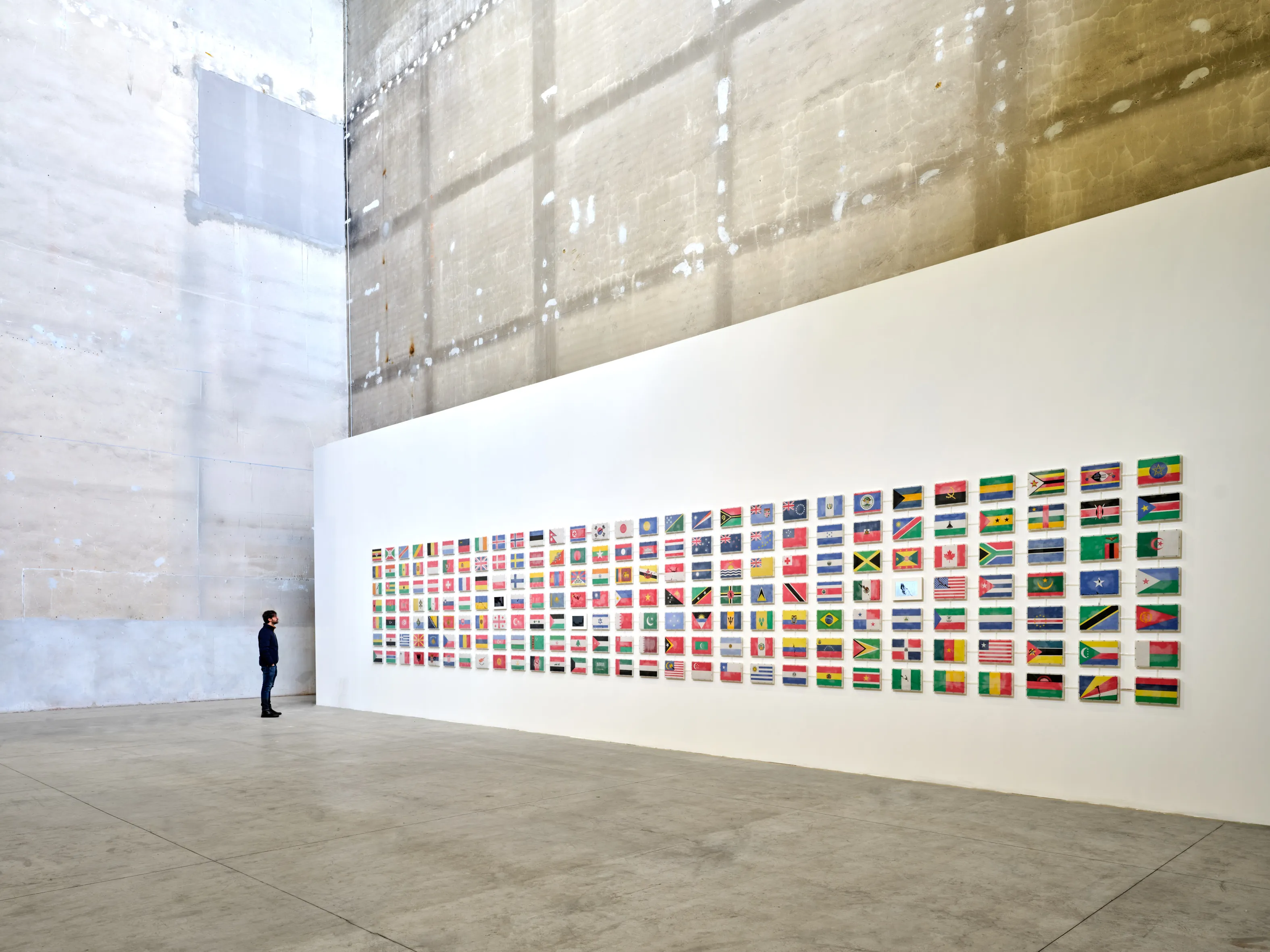
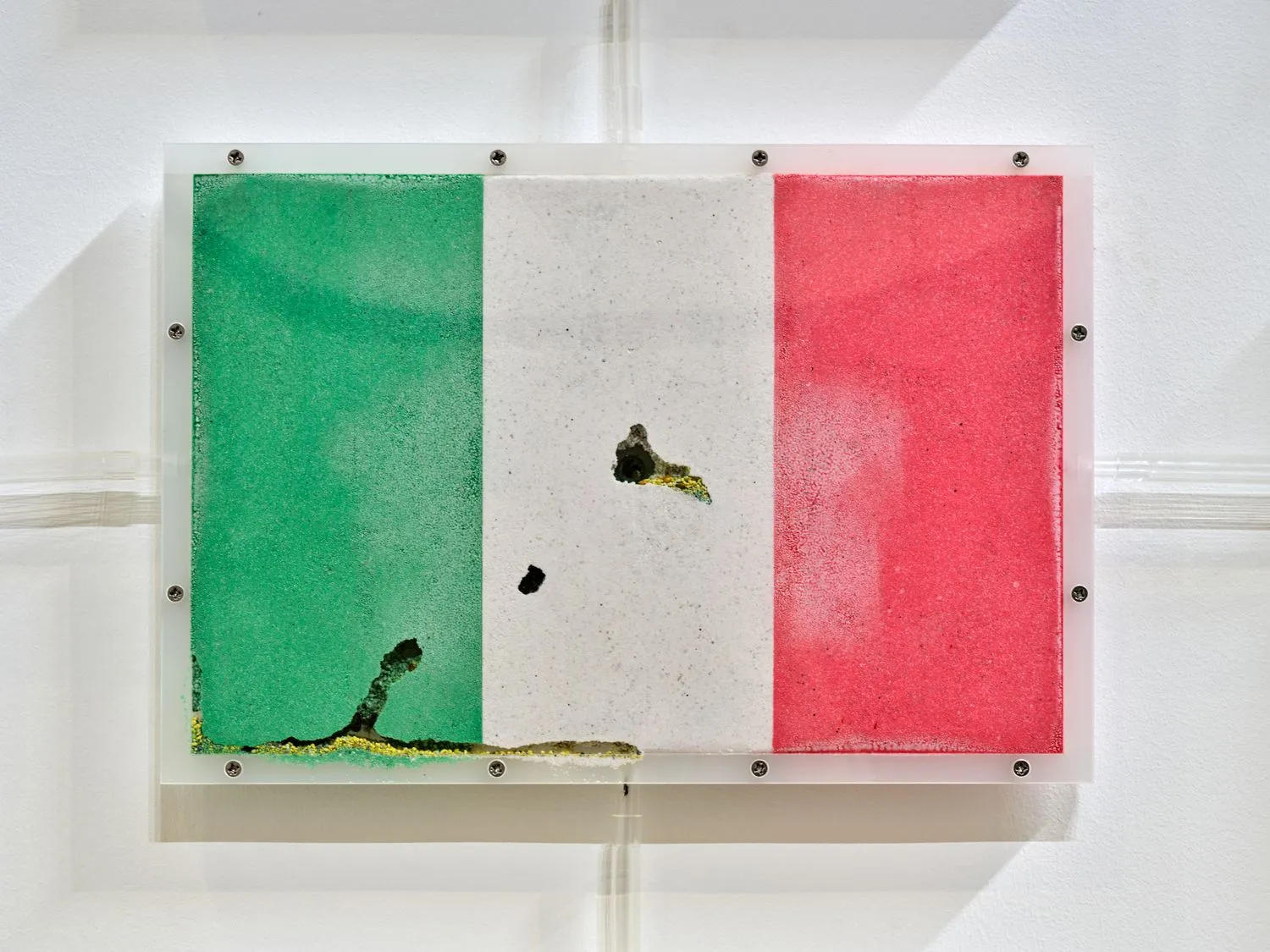
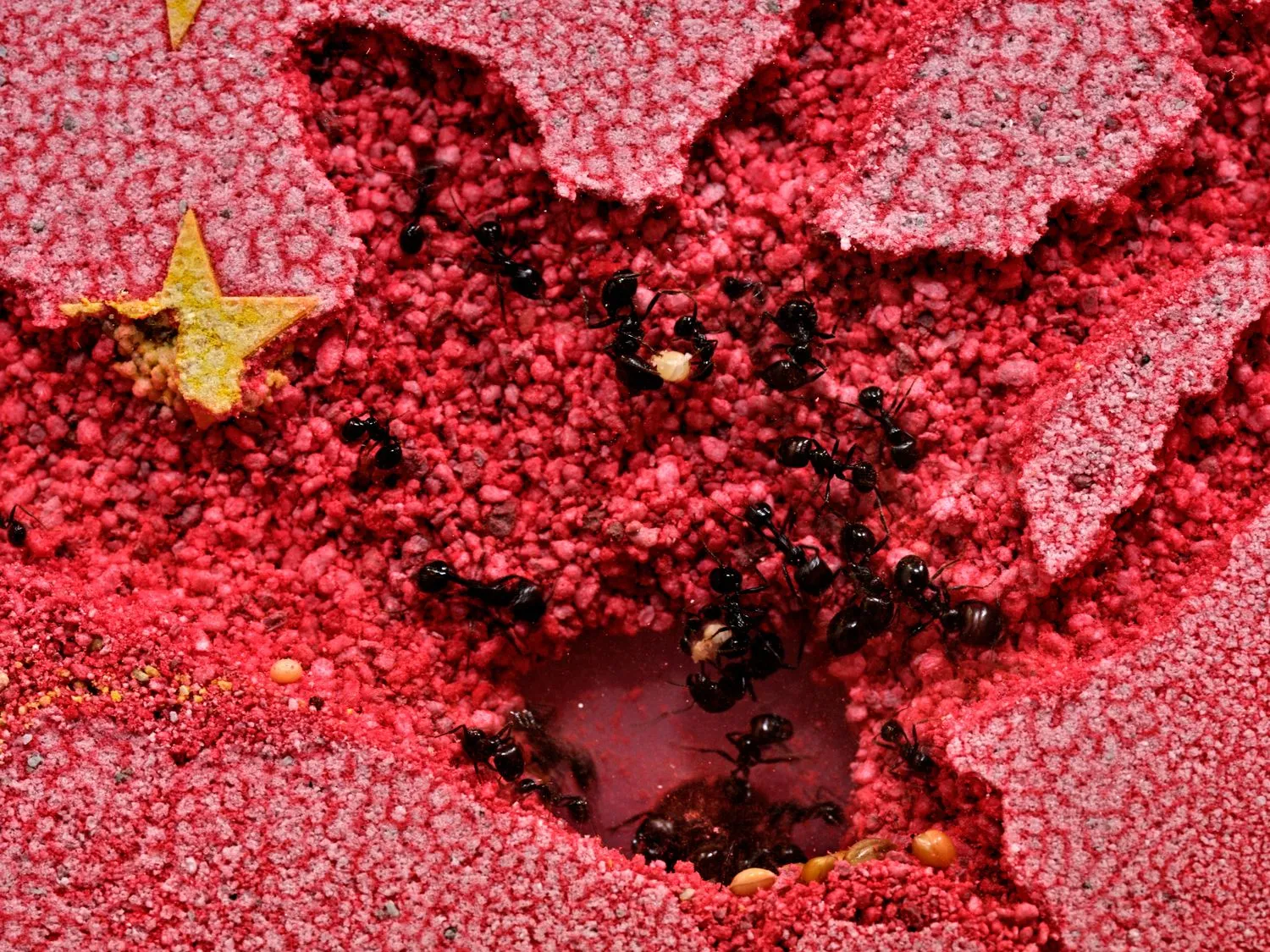
JM: Your work often critiques fixed national identities, as in The World Flag Ant Farm, where ants slowly dismantle flags and borders. How do you think this piece resonates differently today than it did when first shown in the early 1990s?
YY: The work The World Flag Ant Farm, presented at the Venice Biennale, featured national flags from around the world created with sand, which were gradually tunneled, eroded, or merged by ants. I can say that the piece was born from the atmosphere of an era marked by the end of the Cold War—when the Berlin Wall fell, the Soviet Union collapsed, the Socialist Federal Republic of Yugoslavia disintegrated, and Czechoslovakia dissolved its federation. It was a time when the global order was undergoing dramatic shifts. The hypothesis of the 'end of history'—taken from the book by Francis Fukuyama—seemed to take hold: the belief that liberal democracy and free-market capitalism had triumphed and brought an end to the cycles of rise and fall. However, today we are witnessing the resurgence of conflicts over borders, such as Russia's invasion of Ukraine and the ongoing conflict between Israel and Palestine. Alongside the negative consequences of globalization, we are also seeing the rise of new walls - both literal and figurative - built through the rejection of refugees and immigrants. In such a time, I believe it is not without meaning to reinterpret and reflect upon my work. I hope that doing so may offer some renewed perspective.
JM: You've spoken about 'wandering as a permanent position.' How does this philosophy of movement and uncertainty influence the way you live and create today?
YY: The concept of Wandering Position, which recurs throughout my work, originates from a meditative act of tracing the path of an ant within a frame. The small, pursued presence of the ant remains unaware that it is being followed, precisely because the entity pursuing it - myself - is so vaguely immense. Yet this relationship also implies a metaphor: that I, the seemingly vast observer, might myself be pursued by an even larger system. This layered perspective suggests a chain of observation and pursuit, and it is this sense of detached, overarching viewpoint that has been the starting point of my creative practice.
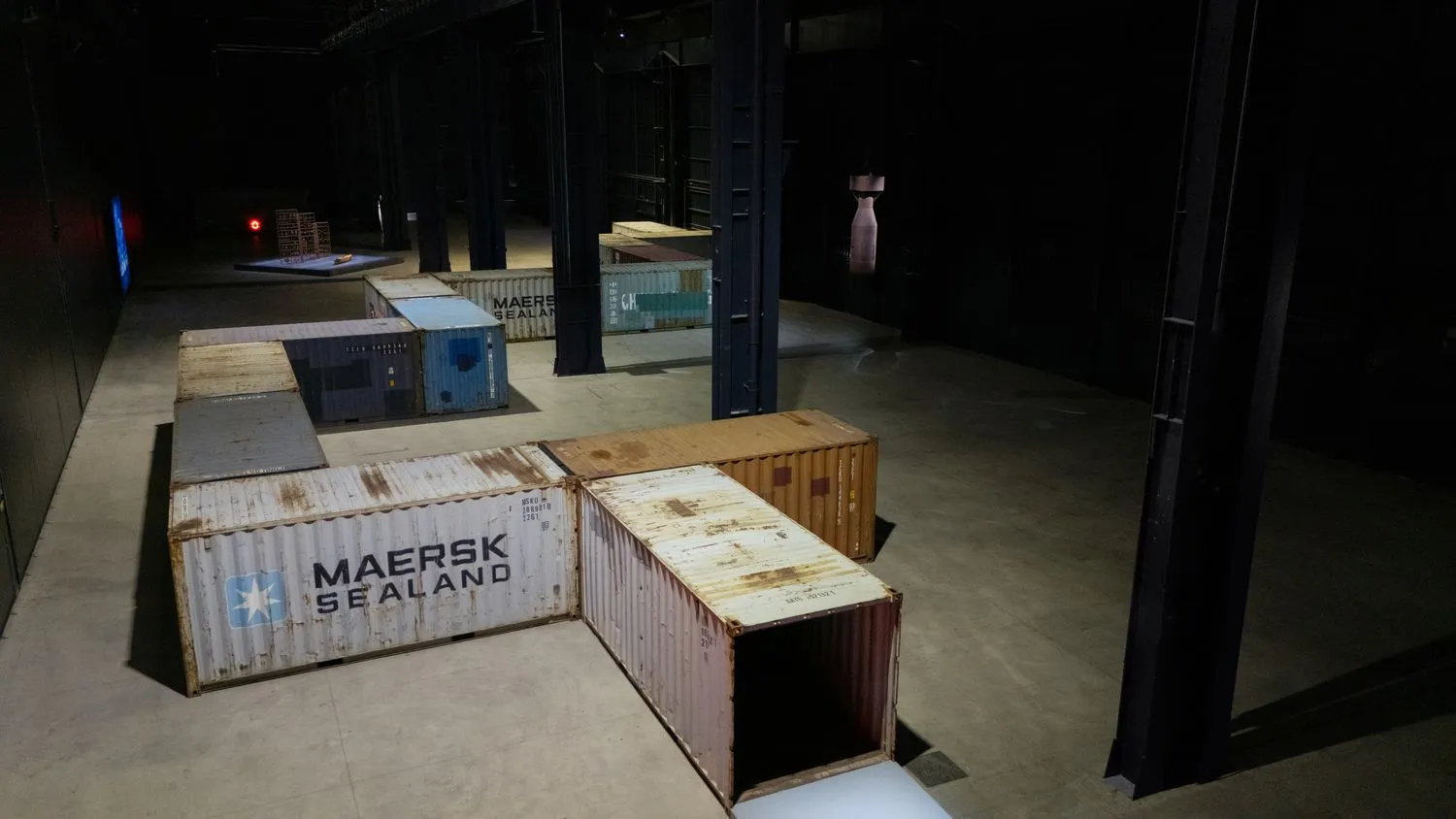
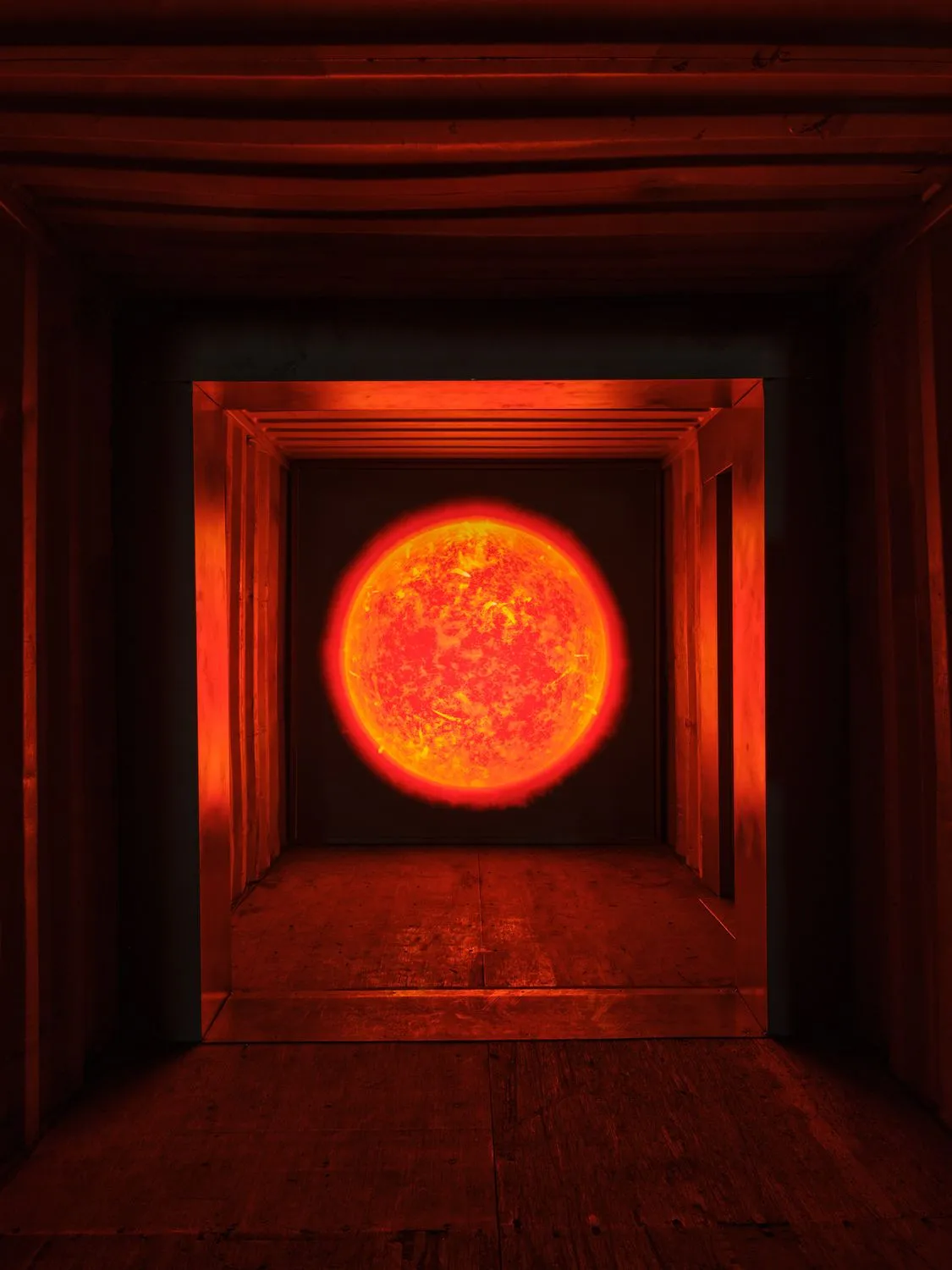
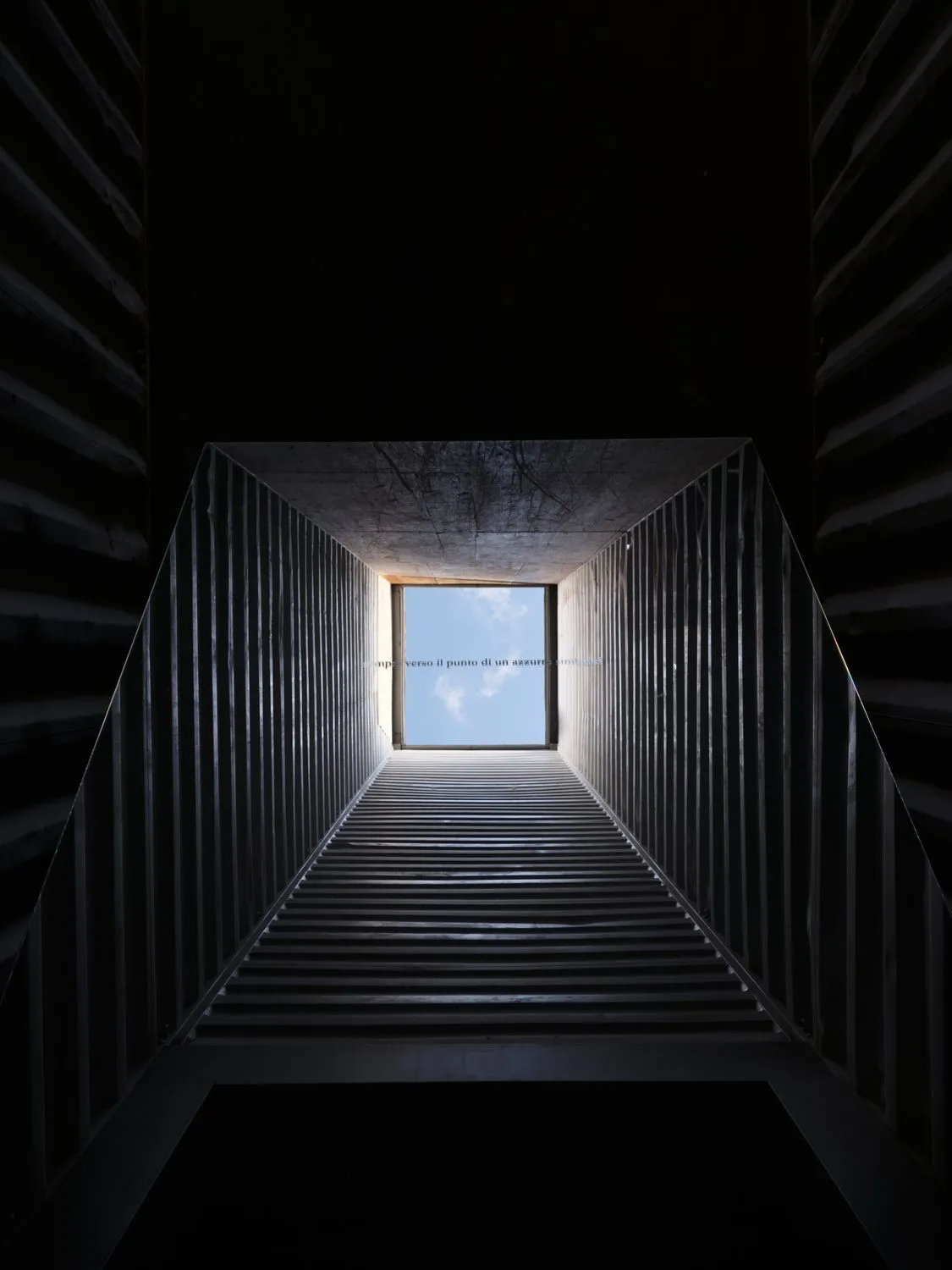
JM: Through your long-term work on Momoshima—and earlier on Inujima—you've revitalized abandoned spaces and built deep connections with local communities. How have these experiences shaped your understanding of art’s role in sustaining communities?
YY: I don't see art as merely a tool for regional revitalization. If the region is revitalized as a result in the process of pursuing art as an end in itself, that is a meaningful outcome. Living immersed in a major city, it's hard not to feel the looming threat of being subsumed by globalization. My work on remote islands can be seen as both a way to reaffirm my own position in relation to history and as a form of resistance against the over-centralization of urban life and the forces of globalism.
JM: Your work has consistently explored the political potential of art and its role in questioning established systems. In today's world, how do you see art's capacity to still create meaningful change?
YY: I believe that art is a way for understanding the world from multiple perspectives - comprehensively, from above, and in a universal sense. I trust in the potential of art to transcend language barriers and enable genuine exchange with others.
